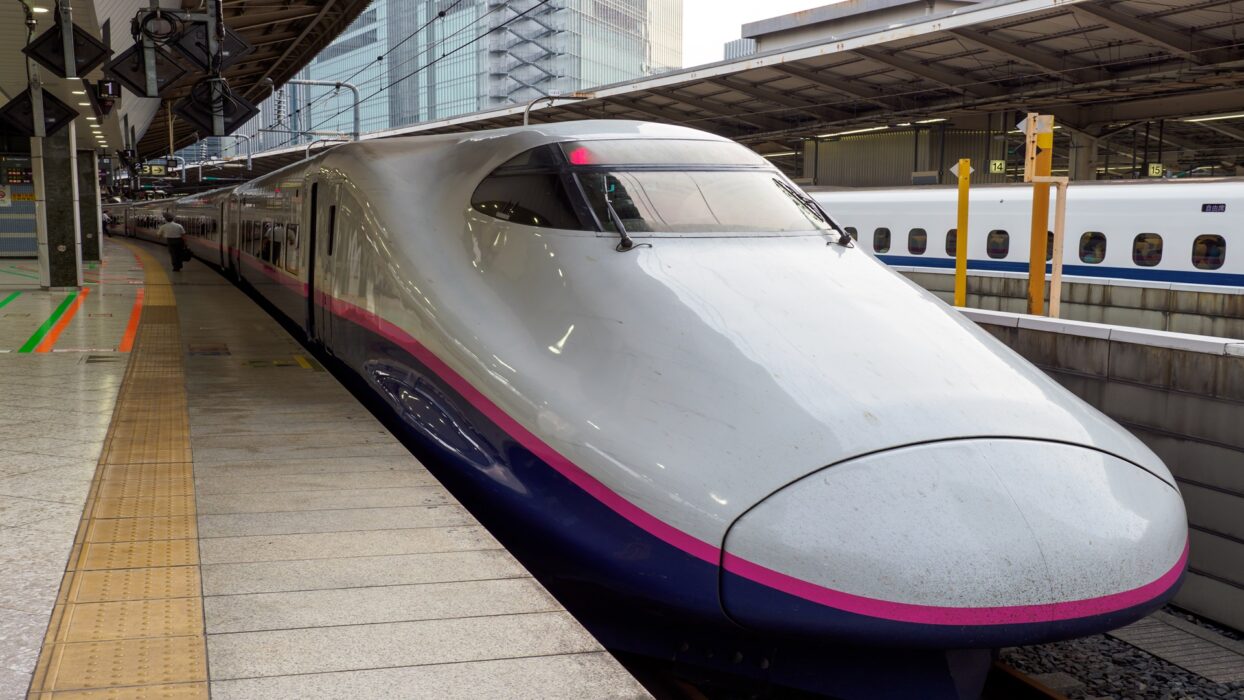Exploring Tokyo’s Yamanote Line: A Gateway to Adventure
Welcome to the Yamanote Line, Tokyo’s iconic circular train route that connects you to the heart of Japan’s bustling capital! This vibrant green line isn’t just a means of transportation; it’s a lifeline that weaves through the city, linking some of Tokyo’s most famous neighborhoods and attractions. With its 29 stations, the Yamanote Line is a traveler’s dream, offering easy access to the best that Tokyo has to offer, from shopping and dining to cultural experiences and historical sites.
But the Yamanote Line is more than just a train route. It carries with it a rich history and cultural significance, reflecting the evolution of Tokyo itself. Established in the late 19th century, it has transformed from a simple rail service into a symbol of Tokyo’s urban landscape. As you hop aboard, you’re not just traveling from one place to another; you’re stepping into a living history that has shaped the city over the decades.
Discovering the Yamanote Line: A Tokyo Train Route Like No Other
The Yamanote Line’s circular route is a marvel of urban planning, making it one of the most efficient ways to explore Tokyo. Imagine this: you can start your day in the bustling district of Shinjuku, famous for its neon-lit nightlife and sprawling gardens, and then find yourself in the trendy streets of Shibuya, home to the world-renowned Shibuya Crossing and chic shopping spots, all within minutes! This seamless connection makes the Yamanote Line the backbone of Tokyo train routes, allowing visitors to easily explore the city’s diverse neighborhoods.
Along the line, you’ll discover a treasure trove of attractions, each station offering its own unique flavor and vibe. Whether you’re a history buff, a foodie, or a shopaholic, the Yamanote Line has something for everyone. Plus, with trains running every few minutes, you can hop on and off at your leisure, making it a breeze to curate your own Tokyo adventure.
Must-See Spots Along the Yamanote Line: A Tourist’s Delight
Let’s take a closer look at some of the must-see spots along the Yamanote Line that you simply can’t miss:
Shinjuku: Nightlife and Gardens
Shinjuku is a vibrant district that never sleeps! By day, you can stroll through the beautiful Shinjuku Gyoen National Garden, a serene escape filled with cherry blossoms in spring and lush greenery year-round. As the sun sets, the area transforms into a nightlife hotspot, with countless izakayas (Japanese pubs), bars, and clubs. Don’t forget to check out the famous Robot Restaurant for a unique dining experience that combines food with an electrifying show!
Shibuya: The Famous Crossing and Shopping
Next up is Shibuya, where the iconic Shibuya Crossing awaits. This bustling intersection is a sight to behold, especially during peak hours when hundreds of pedestrians cross from all directions. After soaking in the atmosphere, dive into the nearby shopping district, where you can find everything from high-end fashion to quirky souvenirs. Don’t miss Shibuya 109, a shopping mecca for trendy apparel!
Ueno: Museums and Parks
Ueno is a cultural hub that boasts several must-visit attractions. The Ueno Park is perfect for a leisurely stroll, especially during cherry blossom season. But that’s not all! Within the park, you’ll find the Tokyo National Museum and the Ueno Zoo, making it an ideal spot for art and animal lovers alike. Grab a bite at one of the charming street food stalls nearby to refuel for your next adventure!
With so many must-see spots in Tokyo accessible via the Yamanote Line, the possibilities are endless. For more in-depth tips on how to maximize your visits to these hotspots, check out the Ultimate Travel Guide to Tokyo’s Yamanote Line.
Hidden Gems of the Yamanote Line: Off the Beaten Path
While Tokyo is brimming with famous attractions, the Yamanote Line also offers a treasure trove of hidden gems waiting to be discovered. These lesser-known spots provide a glimpse into the local culture and charm that often goes unnoticed by the average tourist.
Yanaka: A Step Back in Time
Step off at Yanaka Station and you’ll find yourself in a neighborhood that feels like a time capsule of old Tokyo. This area survived the bombings of World War II, preserving its traditional wooden houses and temples. Wander through the Yanaka Cemetery for a peaceful stroll among cherry blossom trees or visit the Yanaka Ginza Shopping Street, where you can sample local snacks and shop for unique souvenirs. The atmosphere here is laid-back, making it a perfect escape from the hustle and bustle of the city.
Koenji: Indie Vibes and Quirky Cafes
Just a few stops away is Koenji, a haven for those who love indie culture. Known for its vintage shops and live music venues, Koenji is a hotspot for artists and musicians. Check out the local cafes, like Hattifnatt, a whimsical spot inspired by the Moomins, where you can sip on delicious coffee while surrounded by quirky decor. If you’re lucky, you might stumble upon a local festival or street performance that showcases the vibrant community spirit!
These hidden gems along the Yamanote Line are just waiting to be explored. For more insider tips on discovering Tokyo’s lesser-known attractions, check out the Discover Hidden Gems on the Yamanote Line.
A Cultural Mosaic: Tokyo’s Neighborhoods Along the Yamanote Line
Each neighborhood along the Yamanote Line has its own unique flair, contributing to the rich cultural mosaic that is Tokyo. Let’s explore some of these vibrant areas that showcase the city’s diversity.
Harajuku: The Heart of Fashion and Youth Culture
Famous for its colorful street fashion, Harajuku is a must-visit for anyone interested in youth culture. Head to Takeshita Street to see the latest trends and maybe even spot some creative outfits. Don’t miss Meiji Shrine, a serene oasis nestled in a forested area, offering a moment of tranquility amidst the urban chaos. Harajuku is also home to many themed cafes, so indulge your inner child with a visit to a cat cafe or a kawaii (cute) themed eatery!
Ikebukuro: Anime and Entertainment Hub
If you’re an anime fan, Ikebukuro is the place to be! The district is packed with shops dedicated to anime and manga, including the famous Otome Road, where you can find all things related to female-oriented anime. Sunshine City is another highlight, offering shopping, dining, and even an aquarium! Don’t forget to check out the Pokemon Center Mega Tokyo for some fun souvenirs!
These neighborhoods showcase the diverse cultural experiences that Tokyo has to offer. Whether you’re into fashion, anime, or just soaking in the local atmosphere, the Yamanote Line connects you to it all.
Culinary Adventures on the Yamanote Line: Food to Savor
Tokyo is a food lover’s paradise, and the Yamanote Line is your ticket to some of the best culinary experiences in the city. From street food stalls to high-end restaurants, there’s something for every palate!
Ramen in Shinjuku
When in Shinjuku, slurp up a steaming bowl of ramen! The area is famous for its ramen shops, each offering unique broth and toppings. Try Ichiran Ramen, where you can customize your order and enjoy your meal in a private booth for an immersive experience!
Sushi in Tsukiji
Hop off at Tsukiji and treat yourself to some of the freshest sushi in the world! While the outer market is still bustling with vendors selling seafood, you can find sushi restaurants that serve up delicious nigiri and sashimi. Don’t forget to try a sushi breakfast for a truly local experience!
Street Food in Ueno
Ueno is not just about museums and parks; it’s also a street food haven! Take a stroll through Ameyoko Market and sample a variety of snacks, from grilled skewers to sweet treats like taiyaki (fish-shaped cakes filled with red bean paste). It’s the perfect way to fuel your adventures!
For more delectable dining options along the Yamanote Line, check out Explore Tokyo’s Yamanote Line: Food, Fun & Festivals.
Festivals and Events: Celebrate Tokyo Along the Yamanote Line
Tokyo is alive with festivals and events throughout the year, and many of them are easily accessible via the Yamanote Line. Experience the vibrant culture and traditions of Japan by planning your visit around these seasonal celebrations!
Cherry Blossom Festivals in Spring
Spring is a magical time in Tokyo, with cherry blossoms blooming across the city. The Shinjuku Gyoen and Ueno Park are popular spots for hanami (flower viewing) parties. Bring a picnic blanket, some snacks, and enjoy the breathtaking views of sakura in full bloom!
Summer Matsuri: Festivals of Light and Sound
During the summer months, various matsuri (festivals) light up the city with parades, traditional dances, and fireworks. The Shibuya Summer Festival and Asakusa Samba Carnival are just a couple of events that showcase Tokyo’s lively spirit. Join in the festivities and experience the joy of Japanese culture!
Winter Illuminations
As the weather cools, Tokyo transforms into a winter wonderland with dazzling illuminations. Head to Shinjuku and Roppongi to see stunning light displays that create a festive atmosphere. Don’t forget to warm up with some delicious hot chocolate from local cafes!
For a full calendar of events and to plan your visit, check out Explore Tokyo’s Best Festivals Along the Yamanote Line.
Practical Information for Travelers: Tips for the Yamanote Line
Riding the Yamanote Line is a breeze, but a few tips can make your experience even smoother. Here’s what you need to know to maximize your adventures!
Ticketing Options
Purchasing a ticket for the Yamanote Line is straightforward. You can buy a single ride ticket or a day pass if you plan to hop on and off multiple times. Consider getting a Suica or Pasmo card for added convenience. These rechargeable cards can be used on all trains and buses in Tokyo, making travel a cinch!
Peak Hours
Trains run frequently, but be mindful of peak hours (7:30 AM – 9:30 AM and 5:00 PM – 7:00 PM) when the trains can get crowded. If you can, try to travel outside these times for a more comfortable ride.
Navigating the Stations
Most Yamanote Line stations have English signage, making it easy for travelers to find their way. Just follow the signs to your destination, and don’t hesitate to ask station staff for assistance if needed!
For more tips on getting around Tokyo, visit the Tokyo Metro Guide.
Outdoor Escapes: Parks and Gardens Along the Yamanote Line
Tokyo isn’t just about skyscrapers and bustling streets; it’s also home to stunning parks and gardens that offer a peaceful retreat from city life. Here are some green spaces you can easily access via the Yamanote Line.
Shinjuku Gyoen: A Botanical Wonderland
Shinjuku Gyoen is one of Tokyo’s largest and most beautiful parks. With its meticulously landscaped gardens, it’s a perfect spot for a leisurely stroll or a picnic. Visit during cherry blossom season for a breathtaking display of pink blooms, or enjoy the vibrant foliage in autumn.
Ueno Park: Culture and Nature Combined
Ueno Park is not only home to museums and a zoo but also boasts lovely walking paths and cherry trees. It’s a popular spot for hanami in spring and a great place to relax after exploring the nearby cultural attractions.
Yoyogi Park: A Hub of Activity
Just a short walk from Harajuku, Yoyogi Park is a lively space where locals gather for picnics, jogging, and various activities. On weekends, you might catch live music, dance performances, or even a spontaneous drum circle!
These parks and gardens are perfect for enjoying Tokyo’s natural beauty. For more outdoor activities, check out our guide on Tokyo Parks and Gardens.
Shopping Extravaganza: Retail Therapy on the Yamanote Line
Shopping in Tokyo is an experience like no other, and the Yamanote Line takes you to some of the best retail destinations in the city!
Shibuya 109: Fashion Central
Shibuya 109 is a shopping landmark, especially for young fashionistas. This iconic building houses a multitude of trendy boutiques, making it a one-stop-shop for the latest styles. Be prepared to spend hours browsing through the vibrant shops!
Takeshita Street: Quirky Finds in Harajuku
For unique souvenirs and eclectic fashion, head to Takeshita Street in Harajuku. From kawaii accessories to vintage clothing, you’ll find plenty of one-of-a-kind items. Don’t forget to stop by Crepes and Shakes for a delicious treat!
Ikebukuro’s Sunshine City: All-in-One Shopping
Sunshine City in Ikebukuro is not just a shopping mall; it’s a full entertainment complex! With shops, restaurants, an aquarium, and even an observatory, it’s a great place to spend a day indulging in retail therapy.
For tips on finding unique souvenirs and local products, check out our article on Tokyo Shopping Experiences.
Transportation Insights: Mastering the Yamanote Line
The Yamanote Line is incredibly efficient, making it an ideal choice for travelers looking to explore Tokyo. Here’s what you need to know about its schedule and frequency!
Schedule and Frequency
Trains on the Yamanote Line run frequently, typically every 2-5 minutes. This means you can hop on and off at your leisure without worrying about long waits. The circular route makes it easy to get back to your starting point, so feel free to explore without the pressure of getting lost!
Using Suica and Pasmo Cards
For the ultimate convenience, consider using a Suica or Pasmo card. These rechargeable cards can be used on all trains and buses, as well as at many convenience stores and vending machines. They save you the hassle of buying individual tickets and make your travel experience much smoother.
For more tips on public transport in Tokyo, visit our Tokyo Metro Guide.
Fun Facts About the Yamanote Line: Trivia and Tidbits
Did you know the Yamanote Line has a few fun quirks and interesting history? Here are some trivia tidbits to impress your friends!
A Historical Journey
The Yamanote Line was first opened in 1885 and has since evolved into the lifeline of Tokyo’s public transportation. It was originally intended to connect the city’s major districts, and today it serves over 3 million passengers daily!
Station Names with Stories
Many stations along the Yamanote Line have fascinating stories behind their names. For example, Shibuya was named after a local landowner, while Harajuku comes from a shrine that once stood in the area. Each station has its own unique history, adding depth to your travel experience.
Unique Station Features
Some Yamanote Line stations feature unique art installations or cultural exhibits. For instance, Shinjuku Station is known for its vast network of underground shopping, while Ueno Station showcases beautiful murals and historical displays.
Commonly Asked Questions (FAQs) About the Yamanote Line
Here are some frequently asked questions from travelers about the Yamanote Line:
How long does it take to circle the Yamanote Line?
The entire loop of the Yamanote Line takes about 60 minutes, making it easy to plan your day around the train schedule.
Are there any discounts for tourists?
While there are no specific discounts for the Yamanote Line, consider getting a Tokyo Subway Ticket for unlimited rides within the subway system, which includes access to the Yamanote Line.
Can I use my credit card on the trains?
While some ticket machines accept credit cards, it’s best to use cash or a Suica/Pasmo card for convenience.
For more helpful tips, check out our Tokyo Travel Guide.
The Yamanote Line is more than just a train route; it’s a gateway to the heart of Tokyo. With its rich history, diverse neighborhoods, and endless attractions, it offers a unique glimpse into the city’s vibrant culture. So, hop on board and let the adventures unfold!










